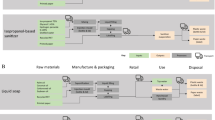Abstract
The objective of this study was to investigate the airborne viable spore concentrations and identify the fungal species in all indoor spaces from the lending library at the Technical University “Gheorghe Asachi” Iaşi, Romania. Samples were collected using the settle plate method and swab samples from PC cooler fan grids as well as from the wall in it’s vicinity and from paper/wood fragments. There were no air conditioning systems in the library rooms. The heating systems were standard with an environmental temperature of 20°C in winter, except for the storage area of old/rare books stacks II, where the temperature was below 15°C and the humidity was very high due to water infiltrations in the walls and poor maintenance. More than 296 fungal colonies from over 78 samples were identified, enumerated, and reported. Indoor airborne fungal spore deposition rates were within the range of 419–1,677 CFU/m2, with the predominance of genera being Aspergillus spp., Penicillium spp., Cladosporium spp., Alternaria spp. and Chaetomium spp. Approximately ten fungal colonies could not be identified. The PC fans move particles from the low levels (floor) to the air, and are thus responsible for maintaining a constant air velocity and contribute to fungal-spore aerosolization, transport, deposition and resuspension. Book paper and wood furniture are known to be suitable substrates for cellulose degrading fungi.



Similar content being viewed by others
References
Anderssen, M., Downs, S., Mitakakis, T., Leuppi, J., & Marks, G. (2003). Natural exposure to Alternaria spores induces allergic rhinitis symptoms in sensitized children. Pediatric Allergy & Immunology, 14, 100–105. doi:10.1034/j.1399-3038.2003.00031.x.
Committee on Damp Indoor Spaces and Health. (2004). Damp indoor spaces and health (pp. 29–89). Washington: National Academies Press.
De Hoog, G. S., Guarro, J., Gené, J., & Figueras, M. J. (2005). Atlas of clinical fungi, 2nd ed. Utrecht/Reus, CD-Rom version (p. 1126). The Netherlands: Centraalbureau voor Schimmelcultures.
Frisvad, J. C., & Samson, R. A. (2004). Polyphasic taxonomy of Penicillium subgenus Penicillium. A guide to identification of the food and air-borne terverticillate Penicillia and their mycotoxins. Studies in Mycology, 49, 1–173. Utrecht, The Netherlands: CBS Fungal Biodiversity Centre.
Ismail, M. A., Chebon, S. K., & Nakamya, R. (1999). Preliminary surveys of outdoor and indoor aeromycobiota in Uganda. Mycopathologia, 148, 41–51. doi:10.1023/A:1007195708478.
Kołwzan, B., Waldemar, A., Kazimierz, G., & Pawełczyk, A. (2006). Introduction to environmental microbiology. Wroclaw: Oficyna Wydawnicza Politechniki Wrocławskiej.
Myszkowska, D., Stepalska, D., Obtulowicz, K., & Porebski, G. (2002). The relationship between airborne pollen and fungal spore concentrations and seasonal pollen allergy symptoms in Cracow in 1997–1999. Aerobiologia, 18, 153–161. doi:10.1023/A:1020603717191.
Nathanson, T. (1995). Indoor air quality in office buildings: A technical guide (pp. 10–53). Ottawa: Minister of Supply and Services Canada.
Samson, R. A., & Vargas, J. (2007). Aspergillus systematics in the genomic era. Studies in Mycology, 59, 75–203. CBS Fungal Biodiversity Center, Institute of the Royal Netherlands Academy of Arts and Sciences, Utrecht, The Netherlands
Şen, B., & Asan, A. (2001). Airborne fungi in vegetable growing areas of Edirne, Turkey. Aerobiologia, 17, 69–75. doi:10.1023/A:1007604417192.
Sime, A. D., Abbott, L. L., & Abbott, S. P. (2002). A mounting medium for use in indoor air quality spore-trap analyses. Mycologia, 94, 1087–1088.
Szczepanowska, H., & Lovett, C. M., Jr. (1992). Fungal stains on paper: Their removal and prevention. Journal of the American Institute for Conservation, 31, 147–160.
Vesper, S. J., Dearborn, D. G., Yike, I., Sorenson, W. G., & Haugland, R. A. (1999). Hemolysis, toxicity, and randomly amplified polymorphic DNA-analysis of Stachybotrys Chartarum strains. Applied and Environmental Microbiology, 65, 3175–3181.
Wood Lee, M. (1988). Prevention and treatment of mold in library collections with an emphasis on tropical climates: RAMP study for the general information programme and UNISIST (pp. 23–24). Paris: UNESCO. PGI-88/WS/9.
Author information
Authors and Affiliations
Corresponding author
Rights and permissions
About this article
Cite this article
Apetrei, I.C., Drăgănescu, G.E., Popescu, I.T. et al. Possible cause of allergy for the librarians: books manipulation and ventilation as sources of fungus spores spreading. Aerobiologia 25, 159–166 (2009). https://doi.org/10.1007/s10453-009-9121-y
Received:
Accepted:
Published:
Issue Date:
DOI: https://doi.org/10.1007/s10453-009-9121-y




